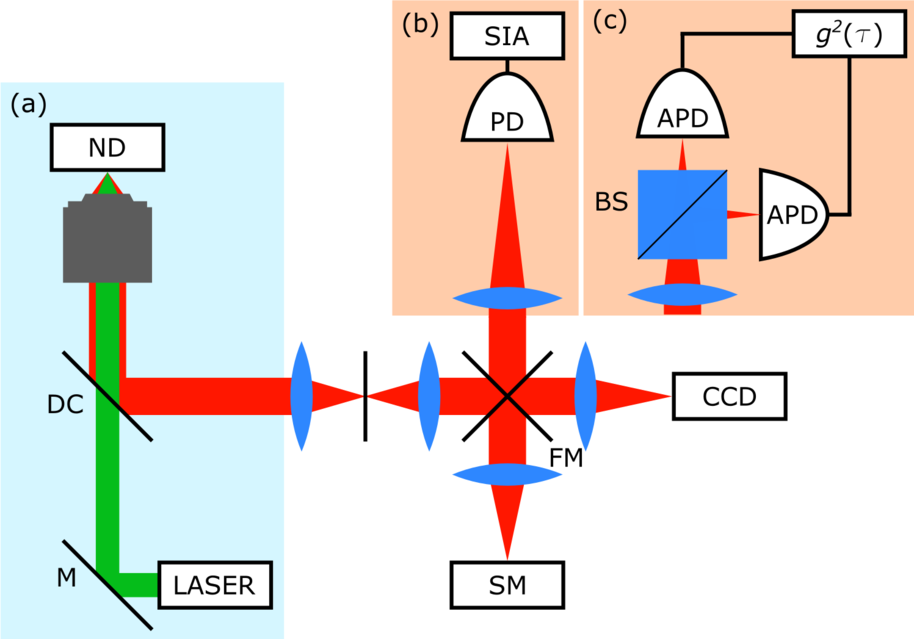SIQUTE project (2012-2015)
The aim of the project was to develop deterministic, compact and efficient single-photon sources for needs of cutting-edge quantum optical technologies such as quantum communication, quantum computation and quantum metrology. In the project, the emission of an excited vacancy centre in a nano-diamond was used. One way of developing a fully deterministic single photon source, that was used in the project, is to take advantage of an emission of an excited silicon vacancy (SiV) centre in a nano-diamond. A state of art optical antenna surrounding the nano-diamond allows collection efficiency more than 95 % of emitted photons. The vacancy centre will act as a predictable single photon source only if it is excited with a short optical pulse. The energy of the pulse needs to be enough to saturate the vacancy centre and significantly shorter than the lifetime of the excited state. To fulfil the abovementioned needs a high-performing pulsing laser system was needed. In the SIQUTE project, Metrology Research Institute in collaboration with VTT-MIKES developed an optical excitation scheme capable of producing very short (40 picoseconds) optical pulses with adjustable repetition rates ranging from 1 kHz up to 80 MHz. The wavelength of the output light is 685nm.

In collaboration with the CMI and the Max Planck Institute for the Science of Light several SiV centres in nano-diamonds were characterized and measured the absolute single photon flux at the wavelength of 725 nm of single SiV centre in nano-diamond was measured. For the measurement of the absolute photon flux emitted by the SiV centre in nanodiamond, we designed and constructed a novel photodetector with cutting-edge amplifier electronics, allowing us to detect optical fluxes in the range of 60 000 photons per second. After the absolute photon flux of the single emitter was known, we lowered the repetition rate of the excitation system. The photon fluxes generated with the lowered pumping rates were fully predicted from the absolute photon flux measurement.
Contact persons: Aigar Vaigu ([email protected])
- Published:
- Updated: